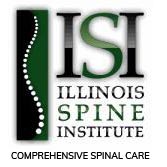Adult scoliosis is the abnormal curvature of the spine giving the spine an “S” or “C” shape in a skeletally mature person. Larger curves cause discomfort while smaller curves usually do not cause any problems. In most cases, the exact cause remains unknown. However adult scoliosis can develop as a result of:
- Untreated childhood scoliosis
- Inherent, age-related changes occurring in the body
- Certain diseases affecting the spine
Symptoms of Adult Scoliosis
Scoliosis can lead to physical deformities such as humpback, prominence of the ribs, uneven shoulders, tilting of the trunk to one side and head not in centre position. It also causes altered gait, spinal instability and rigidity. Pain is the predominant symptom in patients suffering from scoliosis. A compression of the spinal nerve root can result in lower limb weakness along with numbness or tingling sensation. This may hamper coordination and balance with difficulty in movement, standing or sitting. Occasionally, compression of the lower spinal nerves can also lead to difficulty in urination and defecation. This requires immediate medical care. In severe cases, lung and heart (cardiopulmonary) function can be affected.
Diagnosis of Adult Scoliosis
A diagnosis of adult degenerative scoliosis involves:
- A detailed medical and family history of the patient
- Neurological examination with testing of reflexes to evaluate muscle weakness, sensitivity, and other signs of neurological injury
- Physical examination to evaluate movements at the spine and leg length measurements
Diagnostic imaging techniques such as X-rays, CT scan, MRI scans and myelography may also be used to improve the accuracy of diagnosis.
Non-surgical Treatment
A diagnosis of adult degenerative scoliosis involves:
Most patients with adult scoliosis do not require surgery. Non-surgical treatment includes analgesics and anti-inflammatory medications, braces, spinal injections, and physical therapy. Simple lifestyle modifications such as improved nutrition, smoking cessation and regular exercise may also help in the management of scoliosis.
Surgical Treatment
Surgery is recommended for patients who fail to respond to non-surgical treatment or the curvature progresses and becomes greater than 45-degrees, or cardiopulmonary complications occur.
The surgery repairs the abnormal curvature of the spine and stops the curve from getting worse. The surgery utilizes rods, bars, wires, screws, and other types of medically designed hardware to straighten the spine. These are fixed to the vertebrae involved in the curve and the correction is performed. Removal of the intervertebral disc (discectomy) and fusion of the involved vertebrae may also be performed during the surgery. Fusion fuses the involved vertebrae permanently into a single solid bone by placing bone grafts or bone graft substitutes in between the affected vertebrae.
There are different surgical approaches to repair the spinal deformity. The choice of the approach depends on the type of scoliosis, location of the curvature of the spine, ease of approach to the area of the curve and the preference of the surgeon.
Adult Scoliosis correction surgery is relatively safe and usually provides excellent results.>
Risks and complications
Possible complications after scoliosis repair surgery may include:
- Nerve damage causing muscle weakness
- Respiratory or lung problems causing difficulty in breathing
- Spine Infection
- Failure of the bone to join together
- Blood loss requiring transfusion
- Blockage of the intestine may occur
- Gallstones may occur
- Movement of the metal hooks placed in the spine
- Pseudarthrosis, a painful condition occurring as a result of non-healing of the bone effusion, and a false joint grows at the site
- Blood clot formation in the legs: is rare but dangerous if they dislodge and travel up to the lungs
- Pain at the bone graft site
Physical therapy is advised after surgery to help the spine grow normally. Physiotherapists evaluate the posture, muscle strength, and flexibility and then design exercise program suitable for patient that helps to control pain and improve the disability.

